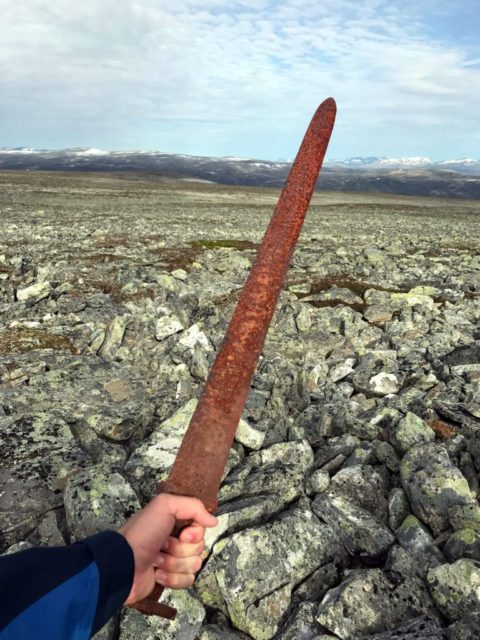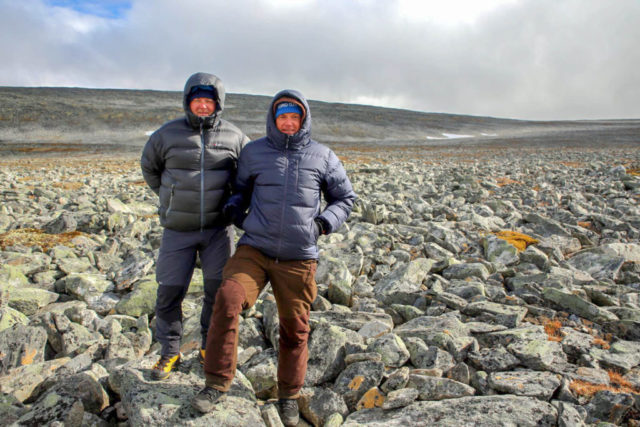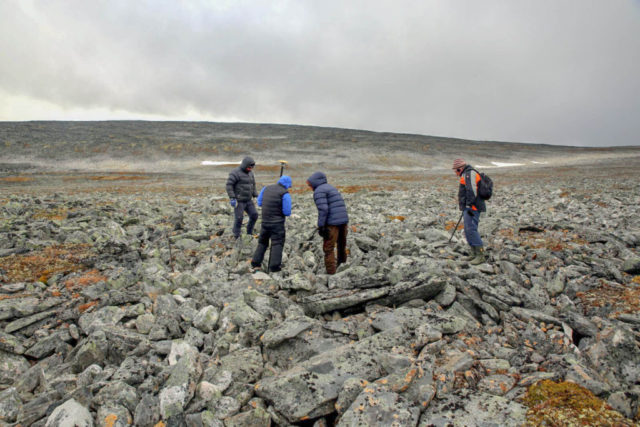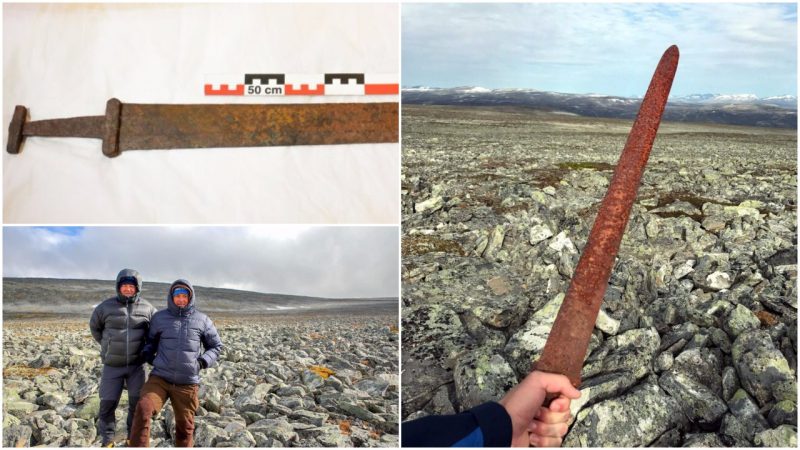At the end of the summer of 2017, Einar Åmbakk and two of his friends were hunting reindeer high in the mountains of Oppland County, Norway. At one point, Åmbakk happened to look down and spotted something amazing–lying in between the rocks was a 1,200-year-old Viking sword in remarkably good condition.
The hilt and blade were covered with bits of rust and all in one piece. Any coverings that had once adorned the hilt were gone, which indicated it was probably an organic material such as leather or wood. When the hunters posted a picture of the sword on social media, it was seen by historical researchers eager to learn the area where it was found.
Fortunately, the cell phone camera used to take pictures of the sword recorded the GPS coordinates. Åmbakk and his friends were able to lead a metal detectorist, an archaeologist, and researchers from the Norwegian glacial archaeology organization Secrets of the Ice to the discovery site, almost two miles above sea level.

The experts examined almost 22 surrounding yards of land but found no other artifacts, bones, or any other indications of human existence. It seems the sword was just lying there for a thousand years. Constant cold and dry air, high altitude with thinner oxygen levels, and heavy snow may have helped to keep it preserved.
The sword was made of high-quality metal. It was dated to 85 to 950 A.D. and researchers say was most likely carried by a Viking warrior. The one thing that science can’t explain is how the sword got there.
According to Secrets of the Ice, “It appears unlikely that the sword has reappeared on the surface due to permafrost movement of stones, as it is well preserved without any kind of scratches and bending. Most likely it was still in its original position or had slid somewhat down between the stones.”
A Viking’s most valuable possession was his sword–it defined him. Some were decorated with semi-precious stones, copper, silver, or bronze on the hilt and displayed the social status of its owner. Many were passed down from generation to generation, while others were buried with their owners. Often, Viking warriors named their swords. Meofainn (decorated down the middle), Gramr (fierce) and Fotbitr (leg-biter) are some of the known names. They kept them close at hand, even while sleeping.

How did this particular warrior lose his sword? There were no burial sites found, and no other evidence of weapons or armor. Why was this Viking alone? The area where the sword was found is covered with rocks called scree. It is extremely difficult to walk on; a path not far from the site was smoother.
Finding Viking hoards is somewhat common in Western Europe, especially the Nordic lands and Great Britain. Coins, jewelry, household goods, small daggers, and pieces of armor are the usual contents. However, finding a sword is rare.
A plausible explanation researchers have come up with is that the warrior may have gotten separated from his group and lost in a heavy blizzard. It is also possible that the Viking was injured or ill and died in the mountains, with wild animals carrying the body away.

Since the incident happened more than 1,000 years ago, these questions will never be answered.
In Norway, the Cultural Heritage Act requires that any archaeological finds dated before 1537 AD must be reported and the artifacts belong to the state. Landowners must pay for any recovery work done at the site, which could run into hundreds of thousands of dollars. For this reason, many valuable and historically important finds are believed to be lost. Contractors will keep findings quiet because of the time required for archaeologists to set up a team and harvest the relics.

Recovery work is slow and precise, using small picks and soft brushes to remove the dirt around artifacts. Large items such as building foundations can take years. With these substantial delays, the projects could lose money or are abandoned, causing the contractor or worker to sometimes destroy precious artifacts and petroglyphs or, if small enough, quietly take them home and hide them.
Read another story from us: Goose hunters in Iceland track down a 1,000-year-old Viking sword
Farmers often leave artifacts in the ground or hide them in fear that their farms will be dug up and crops destroyed with the influx of geologists, metal detectorists, and archaeologists coming in–and then having to pay for it all.
